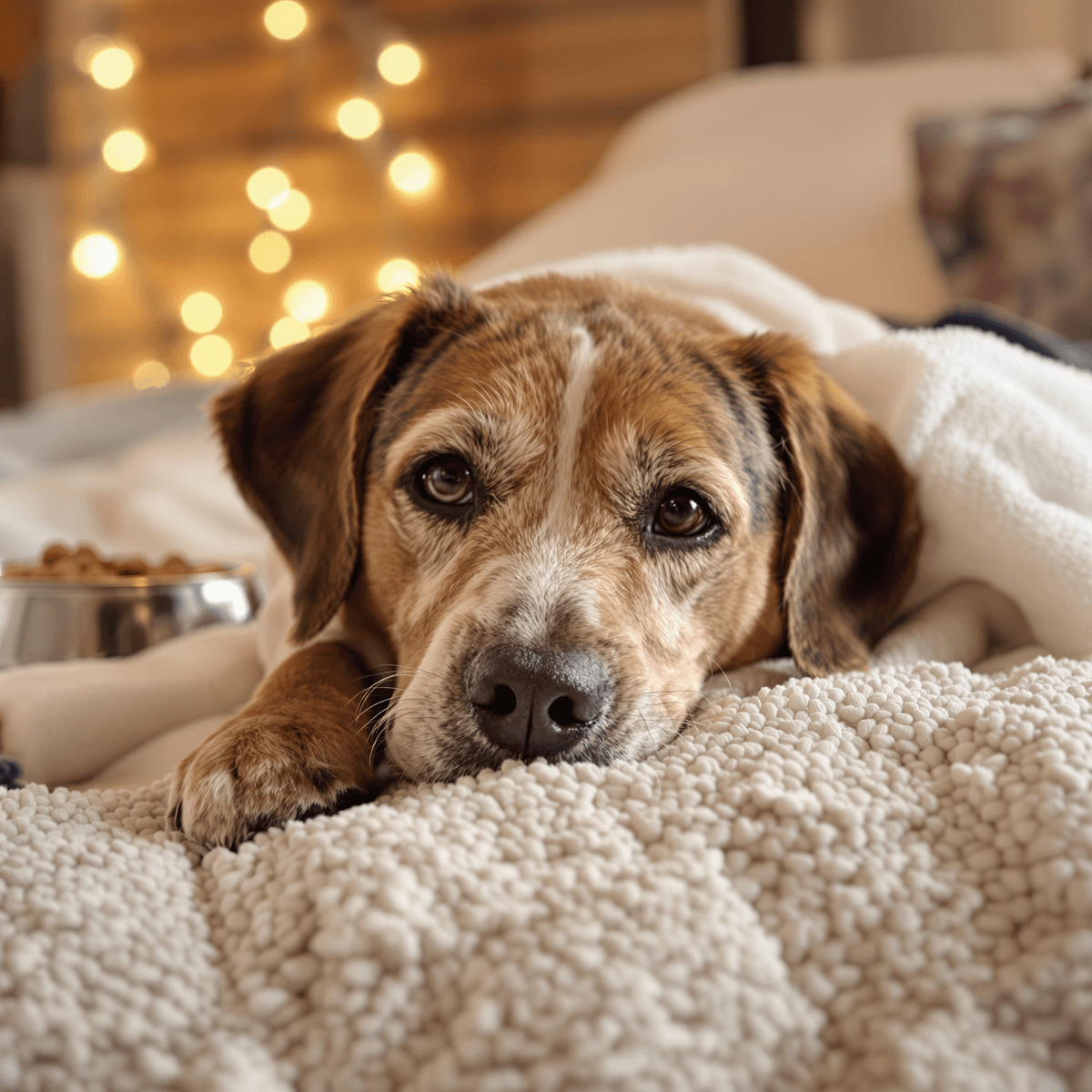Weather Impact on Your Dog’s Coat:
- Cold temperatures can cause dry, itchy skin
- Heat can lead to excessive shedding
- Rain and humidity increase the risk of bacterial growth
- Seasonal allergies trigger skin irritation
- Spring – Managing heavy shedding and protecting against emerging parasites
- Summer – Keeping your dog cool and preventing sun damage
- Fall – Addressing seasonal allergies and maintaining coat health
- Winter – Protecting against dry skin and matting
Did you know? Different dog breeds have varying grooming needs based on their coat type. Long-haired breeds need more frequent brushing, while short-haired dogs might require special attention to prevent sunburn on exposed skin. By adapting your grooming routine to each season’s specific requirements, you create the best environment for your dog’s coat and skin to thrive.
Fall Grooming Tips for Your Dog’s Coat and Skin Health
Fall brings unique challenges for your dog’s coat and skin health. The season’s allergens, such as ragweed pollen, mold spores, dust mites, and leaf debris, can trigger uncomfortable reactions in your furry friend. This makes proper grooming essential to manage your dog’s seasonal allergies.Common Fall Allergens and Their Effects:
These allergens can cause:- Intense scratching
- Red, inflamed skin patches
- Excessive licking
- Hair loss in affected areas
Hypoallergenic Solutions
Hypoallergenic shampoos create a protective barrier against irritants while soothing existing skin issues. Look for products containing:- Oatmeal
- Aloe vera
- Chamomile
- Tea tree oil
Brushing Techniques for Fall
Brush your dog’s coat 2-3 times weekly to:- Remove trapped allergens
- Prevent mat formation
- Distribute natural oils
- Monitor skin condition
Professional Grooming Benefits
Professional groomers offer specialized services for fall-specific issues:- Deep cleaning treatments
- Medicated baths
- Mat removal
- Proper coat trimming
Winter Grooming Tips for Your Dog’s Coat and Skin Health
Winter brings unique challenges for your dog’s coat and skin health. Cold temperatures, dry air, and indoor heating can strip moisture from your pet’s skin, leading to discomfort and potential health issues.Essential Winter Grooming Practices:
- Keep your dog’s coat at its natural length during winter – resist the urge to trim it too short.
- Brush your dog’s fur 2-3 times per week to distribute natural oils.
- Pay special attention to areas prone to matting: behind ears, under collar, belly, and legs.
- Use a metal comb to detect and remove small tangles before they become problematic mats.
Preventing Winter Dryness:
- Limit baths to once every 4-6 weeks.
- Use lukewarm water – hot water can strip natural oils.
- Choose moisturizing shampoos with natural ingredients like:
- Oatmeal
- Aloe vera
- Vitamin E
- Coconut oil
Tips for Long-Haired Breeds:
- Brush daily to prevent painful ice balls from forming between paw pads.
- Trim the fur around paws to reduce snow and ice accumulation.
- Apply pet-safe paw balm before outdoor activities. (Click here for information on paw balm from the Nashville Humane Society.)
- Use a detangling spray to make brushing easier and prevent coat damage.
Indoor Care:
- Run a humidifier to combat dry indoor heating.
- Create a designated drying area with towels after outdoor activities.
- Consider using a leave-in conditioner to maintain coat moisture.
- Keep your dog away from direct heat sources that can cause excessive drying.
Spring Grooming Tips for Your Dog’s Coat and Skin Health
Spring brings warmer weather and increased outdoor activities – and with them comes heavy shedding and pest concerns. Your dog’s coat naturally thickens during winter months and sheds extensively as temperatures rise.Essential Spring Grooming Practices:
- Brush your dog’s coat daily using a deshedding tool to remove loose fur
- Use a slicker brush to prevent matting and tangles
- Give your dog regular baths with a gentle shampoo to help loosen dead fur
- Keep grooming sessions short but frequent – 10-15 minutes daily works better than long weekly sessions
Flea and Tick Prevention:
- Check your dog’s coat after every outdoor adventure
- Pay special attention to:
- Behind the ears
- Under the collar
- Between toes
- Around the tail base
- In skin folds
Signs of Pest Infestation:
- Excessive scratching or biting
- Red, irritated skin
- Small black specks in the fur (Click here for more information on fleas from PetMD)
- Visible ticks or fleas
Summer Grooming Tips for Your Dog’s Coat and Skin Health
Summer heat brings unique challenges for your dog’s coat and skin health. Regular grooming becomes essential to keep your furry friend comfortable and protected during hot weather.Brushing for Optimal Airflow
- Brush your dog’s coat 3-4 times per week to remove loose fur
- Use a slicker brush for long-haired breeds
- Choose a bristle brush for short-haired dogs
- Pay special attention to dense undercoat areas
Proper Trimming Techniques
- Trim around paw pads to prevent heat retention
- Keep facial hair shorter to help your dog stay cool
- Maintain longer fur on exposed skin areas for sun protection
- Never shave double-coated breeds – their natural coat helps regulate temperature
Sun Protection Essentials
- Apply pet-safe sunscreen to:
- Nose
- Ear tips
- Belly
- Areas with thin fur
- Reapply sunscreen every 4-6 hours during outdoor activities
- Choose moisturizers with natural ingredients like aloe vera or coconut oil
Tips for Sensitive Areas
- Check for hot spots daily
- Keep wrinkles and skin folds dry
- Use cooling mats during peak heat hours
- Provide shade during outdoor grooming sessions
The Overall Benefits of Seasonal Grooming for Your Dog’s Well-being
Regular seasonal grooming creates a powerful impact on your dog’s health and your home environment. A well-maintained grooming schedule helps manage shedding cycles, keeping your living spaces cleaner and reducing the amount of loose fur on furniture and floors.Key Benefits of Year-Round Grooming:
- Reduced allergen accumulation in your home
- Early detection of skin issues or abnormalities
- Prevention of painful matting and tangling
- Stronger bond between you and your pet
- Decreased risk of pest infestations
When to Seek Professional Help
Contact a veterinarian if you notice:- Excessive scratching or biting at the skin
- Red, inflamed, or scaly patches
- Hair loss or bald spots
- Unusual odors from the skin or coat
- Changes in coat texture or color
- Open sores or hot spots
Professional Grooming Services Include:
- Breed-specific cutting techniques
- Proper nail trimming
- Ear cleaning and inspection
- Anal gland expression
- Specialized skin treatments
Remember: Professional grooming services complement your at-home care routine. Working with both groomers and veterinarians ensures your dog receives comprehensive coat and skin care throughout every season.
FAQs (Frequently Asked Questions)
Why is seasonal grooming important for my dog’s coat and skin health?
Seasonal grooming is essential because it helps manage the impact of changing weather on your dog’s coat and skin. It ensures your dog remains comfortable, prevents issues like dryness, matting, allergies, and pest infestations, and promotes overall well-being throughout the year.What are the best fall grooming tips to protect my dog from allergies?
During fall, it’s important to use hypoallergenic shampoos to prevent allergic reactions and regularly brush your dog to remove allergens and prevent matting. Professional grooming services can also provide deep cleaning after outdoor activities to maintain a healthy coat and skin.How can I prevent dryness and matting in my dog’s coat during winter?
To prevent dryness and matting in winter, use moisturizing shampoos and conditioners to keep your dog’s skin hydrated. Regular brushing is crucial, especially for long-haired breeds, to avoid tangles and mats caused by harsh winter conditions.What spring grooming practices help reduce shedding and protect against fleas and ticks?
In spring, daily brushing helps reduce shedding significantly. Additionally, implementing effective flea and tick prevention measures and regularly checking your dog for pests during outdoor adventures are vital to maintaining a healthy coat and skin.How should I groom my dog during summer to ensure comfort and protect their skin?
Frequent brushing in summer promotes good airflow through your dog’s coat, keeping them cool. Proper trimming techniques also help with temperature regulation. Using pet-safe moisturizers or sunscreens protects your dog’s sensitive skin from sun damage.When should I seek professional help from veterinarians or groomers regarding my dog’s coat or skin issues?
You should consult a veterinarian or professional groomer if you notice persistent skin problems, excessive shedding, signs of allergies, parasite infestations, or discomfort related to your dog’s coat or skin. Professionals in Oshawa or Bowmanville can provide expert care tailored to seasonal needs.Make An Appointment At Our Oshawa, ON Pet Hospital
Are you looking for a great vet near me in the Oshawa, ON area? You’ve found us! Please do not hesitate to contact us for all of your pet’s veterinary care needs. And be sure to visit our Service page here for more insight about our clinic and the animals we treat.This blog is meant to be informational only. Always consult with your veterinarian for the right medical advice, diagnosis, or treatment plan for your pet and follow their advice.



